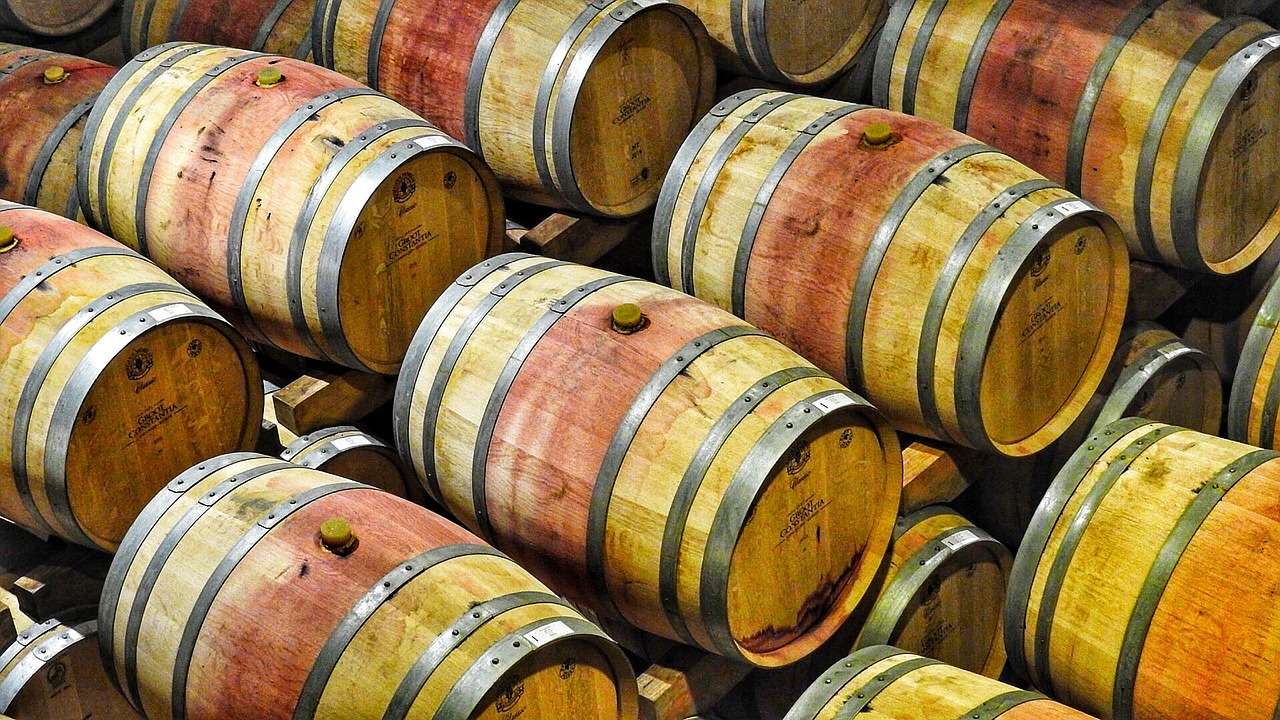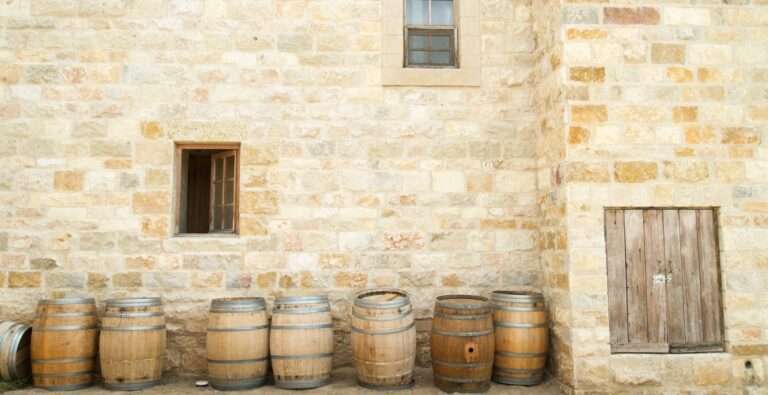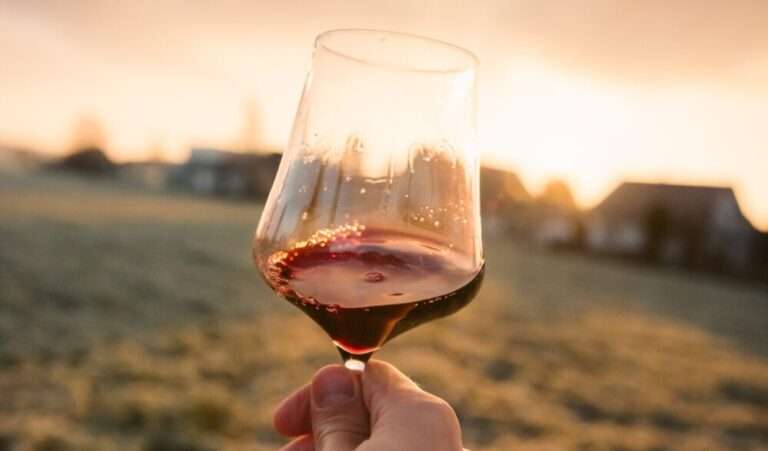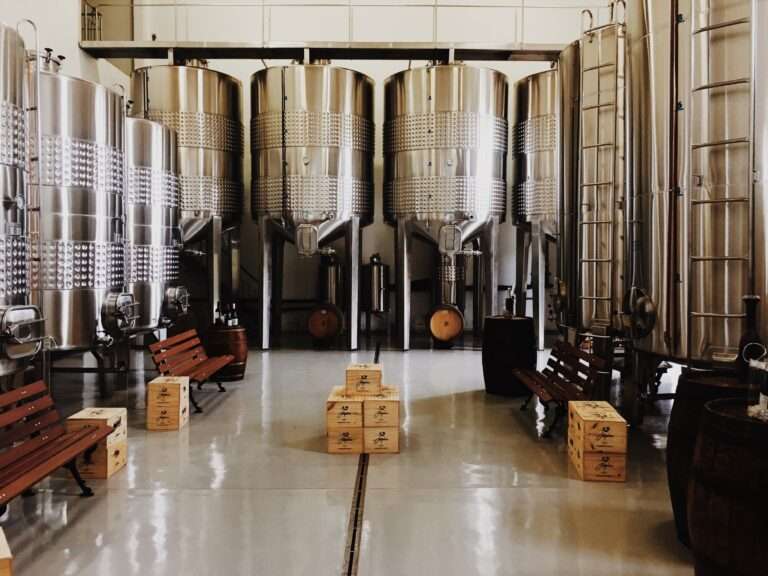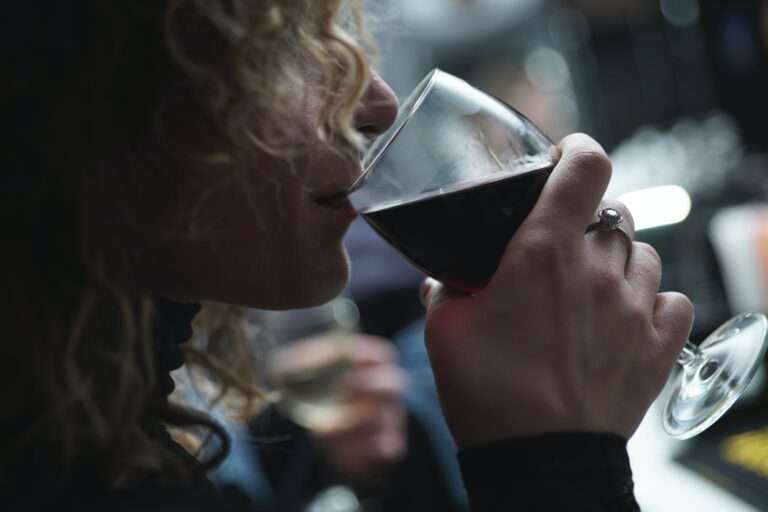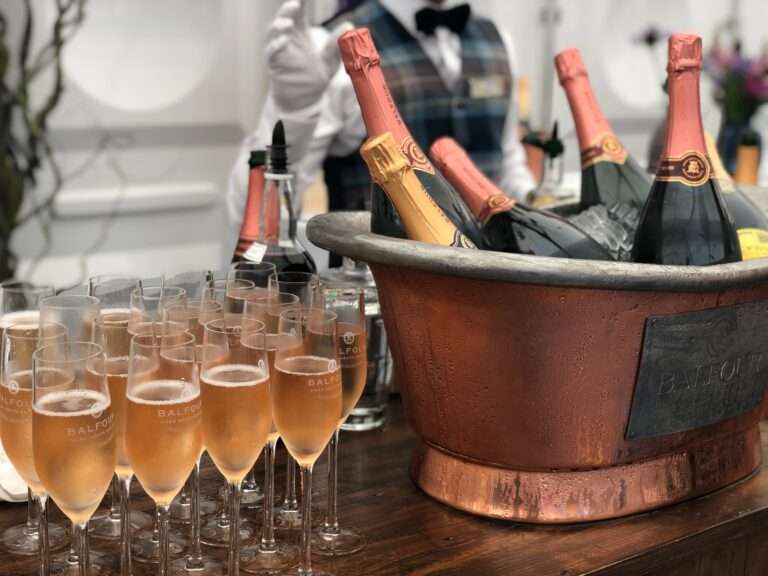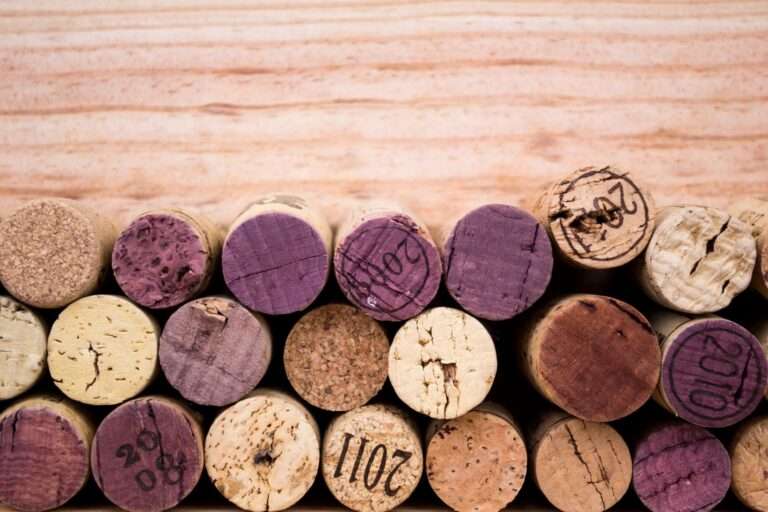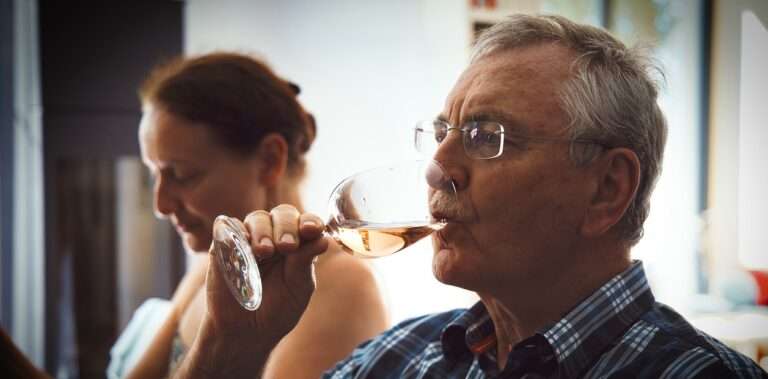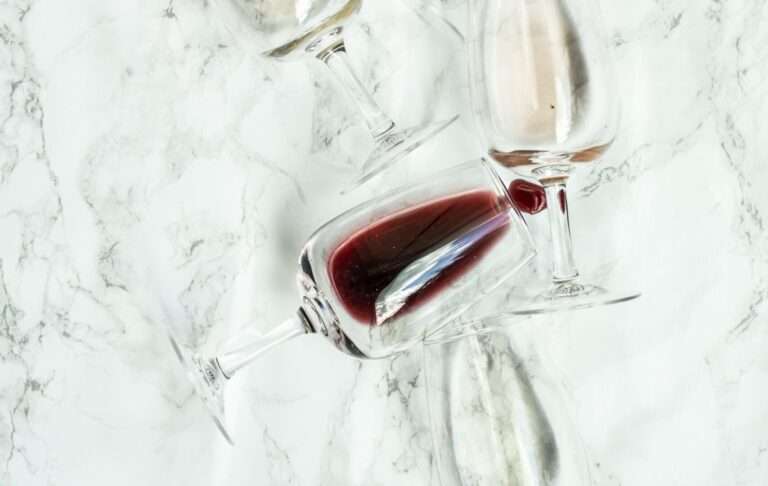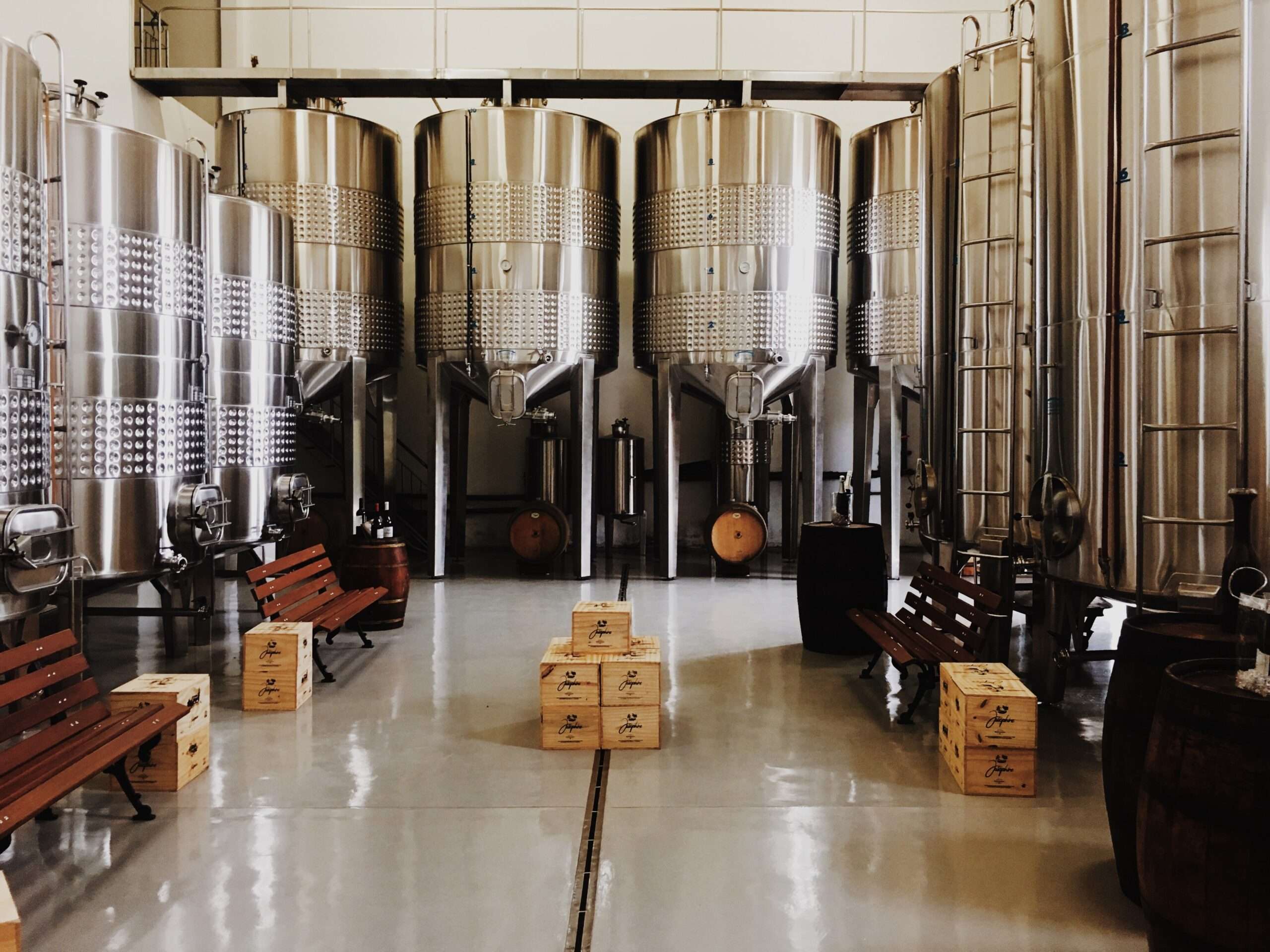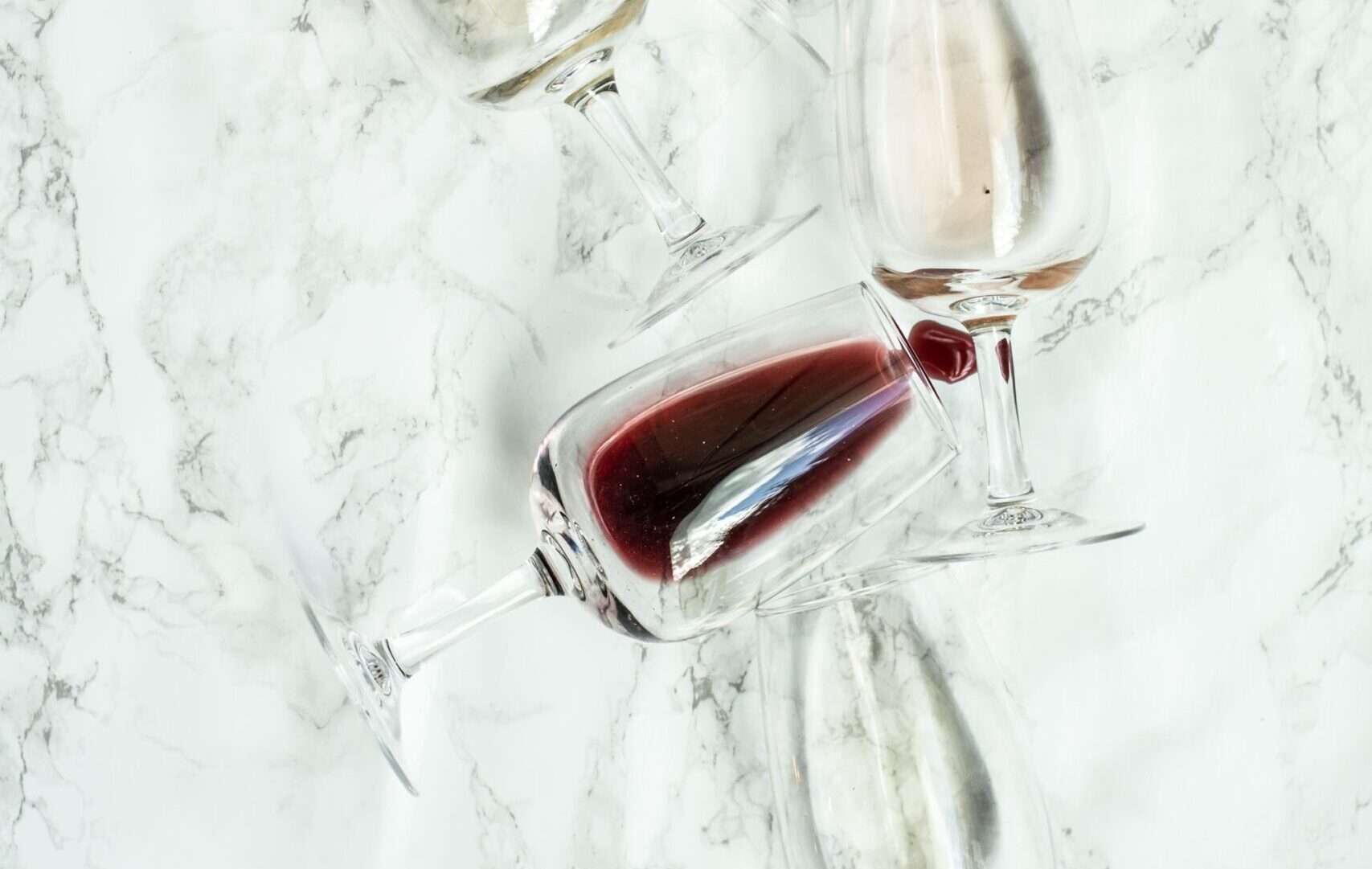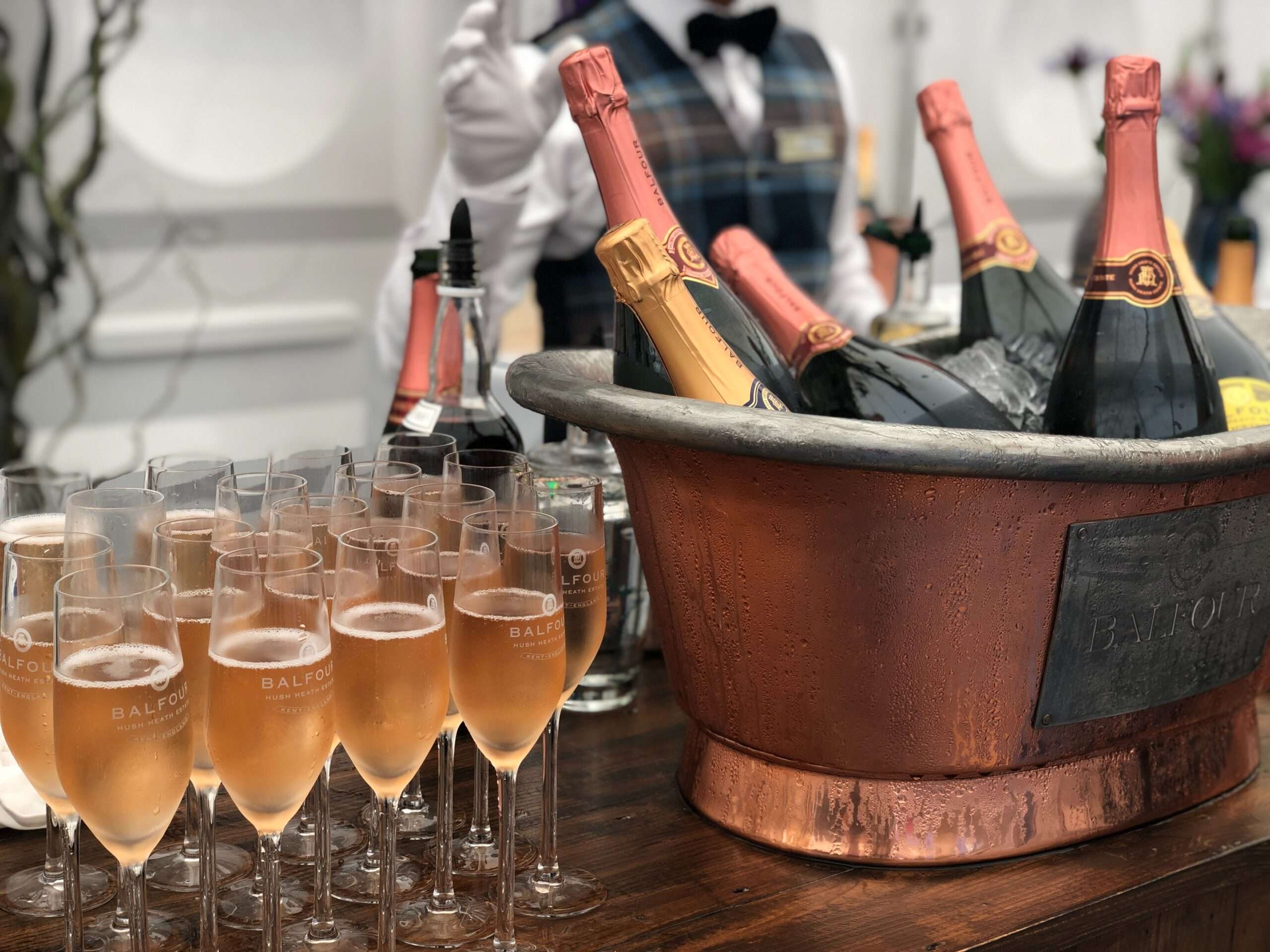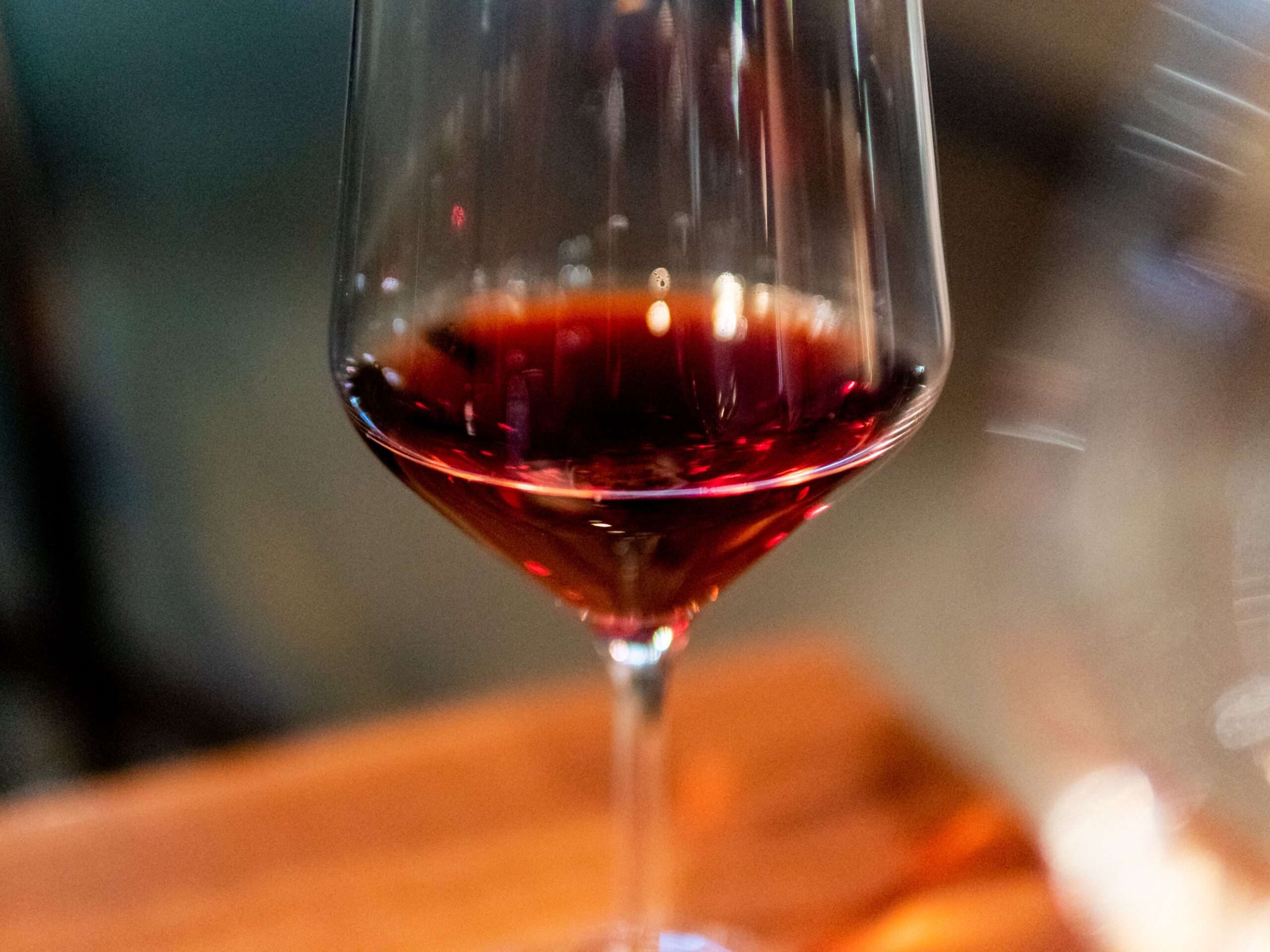Most people enjoy an evening glass of wine, especially with our favorite meal and our favorite person! Like many other wine enthusiasts, you’ll find me participating in wine tastings and discovering something new every time. That said, how much do you know about the winemaking process? Let’s delve into the carefully constructed process of producing wine.
Viticulturists grow grapes at a vineyard, which, once harvested, go to the winery. White wine grapes ferment without skins; red wine grapes go through maceration. Grapes then go through a press to remove any remaining juice. Then aging occurs in steel, wood, or concrete tank, followed by bottling.
The production of wine is a fascinating spectacle that will give you greater admiration for wine. We’ll look at what happens in the vineyard and winery and how your favorite Red or white wine, Merlot, Cabernet Sauvignon, and Chardonnay, became so delicious.
How Is Wine Produced?
Wine is the most natural of all alcoholic beverages because the grapes used to produce wine have every agricultural necessity without artificial additives. In particular, wine has around 210 grams of sugar per liter of grapes used in the production process.
The flavor compounds that give wine their uniquely flavorful properties originate either from the grapes or other precursors in grapes.
Furthermore, the grapes provide a certain level of acidity and a balanced taste when it coats the palate of your mouth. Sugar changes into alcohol and carbon dioxide when yeast is used during fermentation.
When yeast compounds mix with the natural elements of the grapes, they create further differentiating wine tastes. However, it’s pretty common in modern wineries to add things like sulfur dioxide, processing or refining aids that help make wine more stable. Furthermore, some nutrients are also helpful for ensuring that yeast thrives and creates a better result.
An Exquisite Wine Starts In The Vineyard
The first vital step to creating an excellent wine is deciding the best time to pick the grapes. When grapes ripen, their sugar levels increase while their acidity level declines. When these factors align perfectly, the result is high-quality ingredients capable of producing a spectacular wine.
Thus, through experience and error, seasoned winemakers know the tell-tale signs that are indicative of the perfect level of ripeness. There are different categories of ripeness, such as physiological, flavor, and sugar ripeness, and playing around with these three elements pave the way for winemakers to personalize their own wine and create something memorable.
It’s physiologically beneficial to pick grapes when they’re cool, like in the early hours of the morning or late at night. Otherwise, when you process warm grapes, it carries the potential to detract from the natural attributes of the grapes, providing lower-quality ingredients. Once picked, the grapes get placed into containers and sent to the winery – ideally without delay.
After The Vineyard Comes The Winery
When the grapes reach the winery, the process for creating red wine will differ from that of white wine.
The Process For White Wines
The white wine process requires winemakers to press the grapes immediately. In other words, the juice inside the grapes gets squeezed out to separate the liquid and the skins, followed by putting the juice through a fermentation process.
Fermentation For White Wine
The press cycle usually takes a few hours, and at first, the juice may appear brown and murky, but the fermentation process clears it up completely. In fact, grapes usually are not washed before processing; the fermentation process makes the wine microbiologically sound and fit for consumption.
The juice gets placed inside a fermentation vessel made from stainless steel, concrete, or a barrel. The process can proceed with or without the addition of cultured yeasts. Many winemakers actually prefer using the yeasts present on the skins of grapes that exist in the vineyard. Consequently, when pressed, the grapes can benefit from natural yeasts.
The native or indigenous yeasts will carry out the fermentation process. Otherwise, winemakers may prefer to add cultured yeast to gain more control over the process. Furthermore, temperature plays a significant role during fermentation, enabling it to take anywhere from a few days to a couple of months.
After fermentation, the yeast dies and sinks to the bottom of the stainless steel, concrete, or wooden vessel. The dead yeast is called “leaves”; they have an essential role in producing white wine. Wine can typically be bottled anywhere from four months to two years after fermentation.
Adding Fining Agents Is Optional
It’s normal for winemakers to stabilize white wine by adding fining agents and then filter the result so that the wine appears clear, bright, haze-free, and alluring when it sits on the shelf. That said, some winemakers opt for the natural, rugged aesthetic of wine and forgo the step to brighten it.
The Process For Red Wines
Red wine production requires that fermentation take place without removing the skins. When the skins and juice mix together, winemakers call it maceration. After harvesting grapes, it’s pretty common to sort grapes by using a moving table after harvesting them. Workers on either side watch for damaged or rotten grapes, removing them from the main batch.
It’s imperative to remove rotten grapes from the red wine process because the skins and the juice will be in contact for numerous hours. Afterward, workers de-stem the grapes so that the only remaining part is the whole berry.
Fermentation To Create Red Wine
Once fermentation for red wines starts, the carbon dioxide released by the yeasts raises the caps of skins to the vessel’s surface. The caps would dry out if left unattended and create an ideal place for acetic acid bacteria to grow. As a result, it makes a problem called volatile acidity – a vinegar-like smell that originates from acids.
Consequently, winemakers have to monitor and manage the caps carefully. The extraction of flavor and color from the skins during the maceration period is a significant decision. Maceration periods can be longer or shorter; a brilliant winemaker will make calls based on the fruit and the desired wine style.
Pressing Grapes For Red Wine
When it comes to pressing grapes for red wine, the skins that still have juice inside get placed inside a press while the workers transport the existing liquid elsewhere. Afterward, they squeeze the remaining skins for all their juice’s worth, ensuring they do not damage the seeds inside the skins after fermentation. If broken, the seeds release bitter compounds that can spoil the wine.
The Red Wine Aging Process
The aging process for red wine typically happens in barrels. Interestingly, new barrels contribute additional flavor to the wine. It’s also becoming popular for winemakers to use elevage like larger format oak or older barrels that don’t impart any flavor, concrete, and even terracotta and amphora to age the wine.
The winemaker will blend and bottle the wine after the aging process, varying between 6 months to two years. It is also the point where winemakers may filter the wine to eliminate the risk of residual microbes remaining in the wine.
Fining is another process of aging red wine. It involves introducing various fining agents into the wine that grab ahold of some of the tannins and remove them altogether. Consequently, the wine is softer and more polished or refined.
What About Merlot?
Merlot is a dark blue wine grape variety utilized as a blending grape and a varietal wine. Merlot is a preferred grape for blending with the sterner, later-ripening Cabernet Sauvignon, which tends to be heavier in tannin due to its softness, thick skin, and early ripening.
While produced worldwide, the production of Merlot consists of two main production styles: International Style and Bordeaux Style.
International Style – New World Wine
Many New World wine areas embrace this style, emphasizing late harvesting to achieve physiological ripeness and produce inky, purple-colored wines with high alcohol and smooth, velvety tannins with deep plum and blackberry fruit.
Bordeaux Style – Old World Wine
This traditional winemaking approach entails harvesting Merlot early to retain acidity and produce more medium-bodied wines with modest alcohol levels. It may have ingredients like strawberry, raspberry, and even green vegetals are among the fresh, red fruity tastes.
There Are Three Main Merlot Taste Styles:
- a soft, fruity, smooth wine with minimal tannins
- a fruity wine with a refined tannic structure
- a stout, highly tannic style made by using Cabernet Sauvignon profiling
What About Cabernet Sauvignon?
It is cultivated in various climates in practically every major wine-producing country, from Australia to Canada. Merlot and Cabernet Franc are common in Cabernet Sauvignon blends.
Despite its popularity, the grape is still a novel cultivar. It was created in the 17th century in southern France due to a fortuitous cross between Cabernet Franc and Sauvignon Blanc.
The use of oak during manufacture has the most noticeable consequences. The initial winemaking decision is whether to make a varietal or mixed wine.
Cabernet Sauvignon can blend with Tempranillo, Sangiovese, and Shiraz, among other fruits. Many producers ferment and mature each grape variety separately due to the varied fermentation styles of the grapes, then mix the wine just before bottling. If the grapes are blended, the producer must decide whether to do it before, during, or after fermentation.
More Or Fewer Tannins?
Cabernet Sauvignon’s tannic character is an essential factor to consider while creating wine. More tannins are taken from the skin when the must macerate for longer lengths of time, and these tannins will be present in the finished wine.
If winemakers do not want to decrease the maceration period to maximize color and taste concentrations, they can utilize several techniques to soften tannin levels. Oak aging is a typical technique that exposes the wine to progressive amounts of oxidation, allowing the harsh grape tannins to be mellow and gentler wood tannins to emerge.
Cabernet Sauvignon’s love for wood, whether during fermentation or barrel age, is one of its most well-known characteristics. The unusual wood aromas of vanilla and spice complement the natural grape tastes of blackcurrant and tobacco and ease the fruit’s naturally firm tannins.
What About Chardonnay?
Chardonnay is a green-colored grape variety used in the production of white wine. However, it started in the Burgundy wine region of eastern France; it’s now available even in New Zealand and England.
The Chardonnay grape boasts neutral attributes, with flavors commonly associated with the wine deriving from such influences as terroir and oak. Chardonnay lends itself to almost any winemaking style, from dry still wines to sparkling wines, sweet late harvest, and even botrytized wines.
Chardonnay Adapts To Climate
In cool climates, Chardonnay transforms into a medium to light body with a fair amount of acidity. You’ll also be able to discern flavors of apple, pear, and green plum.
In warmer locations, the flavors become more akin to peach, melon, and citrus. Otherwise, particularly hot areas will show signs of tropical fruits like mango and banana.
When Chardonnay goes through malolactic fermentation, it softens the acidity level and creates a smooth fruity sensation in the mouth.
Fermenting Chardonnay
The two winemaking decisions that the result of a Chardonnay is whether or not to use malolactic fermentation (MLF) and the degree of oak influence used for the wine.
Malolactic Fermentation (MLF)
With MLF, the harder malic acid gets converted into softer lactic acid and diacetyl, which creates a smoothness associated with some Chardonnay styles. Wines that forgo the MLF process produce an unripe, apple-like flavoring.
Oak Influence
Oak can be introduced during fermentation or in the form of barrel aging. The amount of charring present on the oak can offer a unique “burnt” flavor. These flavors include cream, smoke, spice, cinnamon, vanilla, cloves, and caramel.
Harvesting
Chardonnay grapes must be harvested early and slightly unripe to maintain the acid levels for sparkling wine production. The harvesting time is crucial because the grape quickly loses acidity as it ripens. Sparkling Chardonnay-based wines tend to exhibit more floral and steely flavors in their youth.
As the wine ages, mainly if it spends significant time on lees, the wines will develop “toasty” ingredients. Chardonnay grapes usually have little trouble creating sugar content, even in cooler climates, which translates into high potential alcohol levels and limits the need for chaptalization.
- Chaptalization – Adding sugar to unfermented grapes must to increase the alcohol content after fermentation.
Five Types Of Wine Aging Vessels
Why do winemakers prefer certain aging vessels? Let’s find out!
Stainless Steel
Stainless steel tanks guarantee no extra aromatic components enter the wine, giving winemakers better control over the fermentation process. It produces a more pure wine, allowing the grape types to express their aromas, resulting in crisper and fruitier wines than those fermented in barrels.
Concrete
Some winemakers like to vinify in concrete tanks because the microporosity of the concrete allows minuscule quantities of oxygen to reach the wine. In other words, only a little oxygen can enter, akin to that of barrels. Because the wines don’t suffer from reduction, they may express their fruit more fully.
- Reduction – A lack of oxygen in the aging wine causes wine to taste and smell bad.
Wood
Compared to steel, wood maintains a relatively constant temperature, allowing for a lengthy and gentle extraction of polyphenols (tannins that help red wine mature) and a moderate malolactic fermentation in the spring.
Terracotta
Because of the porosity of the walls, terracotta allows for spontaneous micro-oxygenation. It promotes proper fermentation and the bonding of anthocyanin, which improves the color of red wines.
Amphora
Amphorae are popular among winemakers because of their organic, clean, and neutral impact on fermentation. Unlike stainless steel, the material is porous, allowing micro-oxygenation without imparting the flavors that wood may.
Conclusion
After growing grapes to the exact specification of acidity and sweetness, it’s time to move from the vineyard to the winery. The processes are different for red and white wines, although they go through a press. Fermentation happens afterward in either steel, concrete, or wood tanks. Finally, it’s aged and bottled for you to purchase and enjoy.

